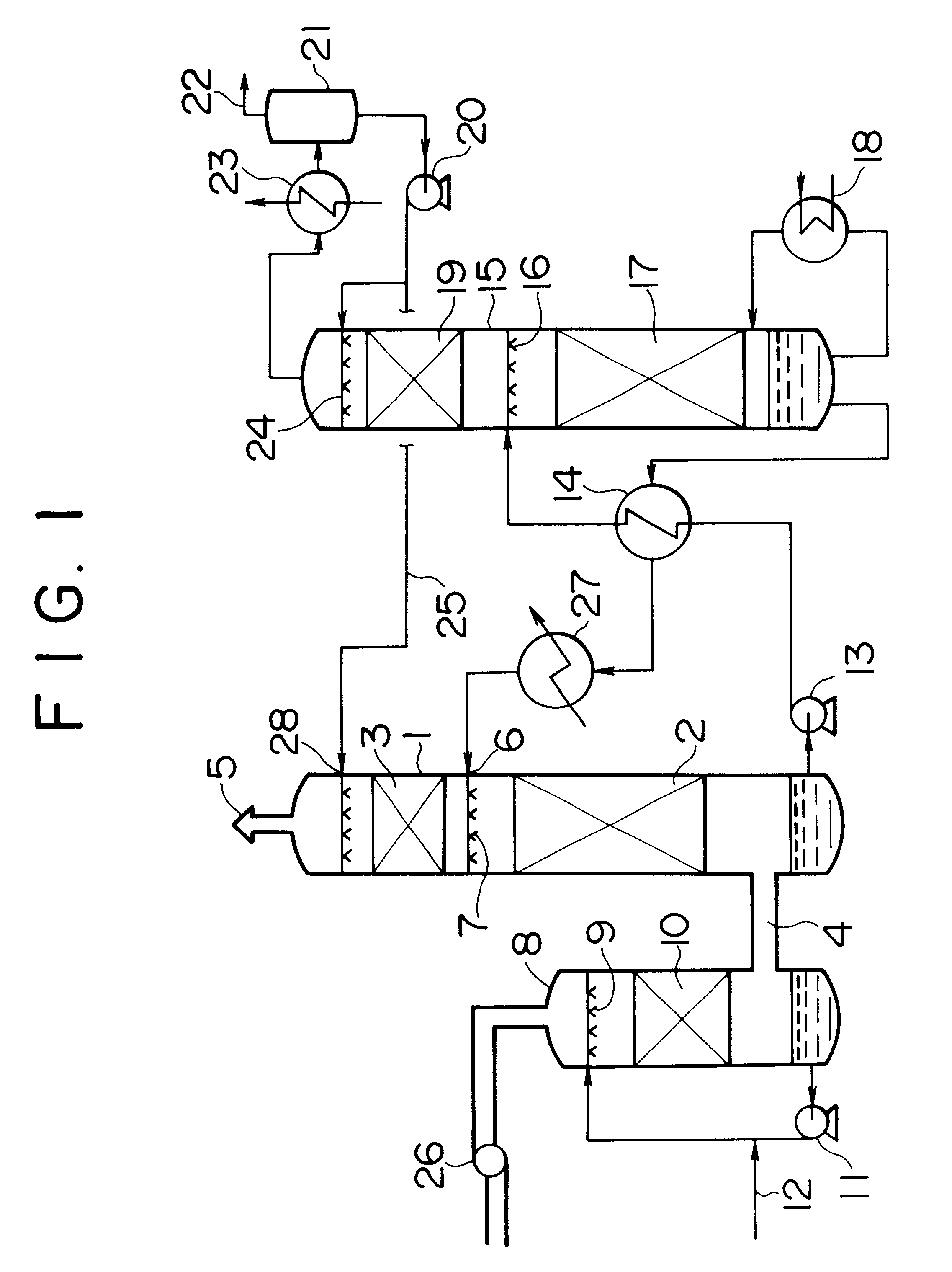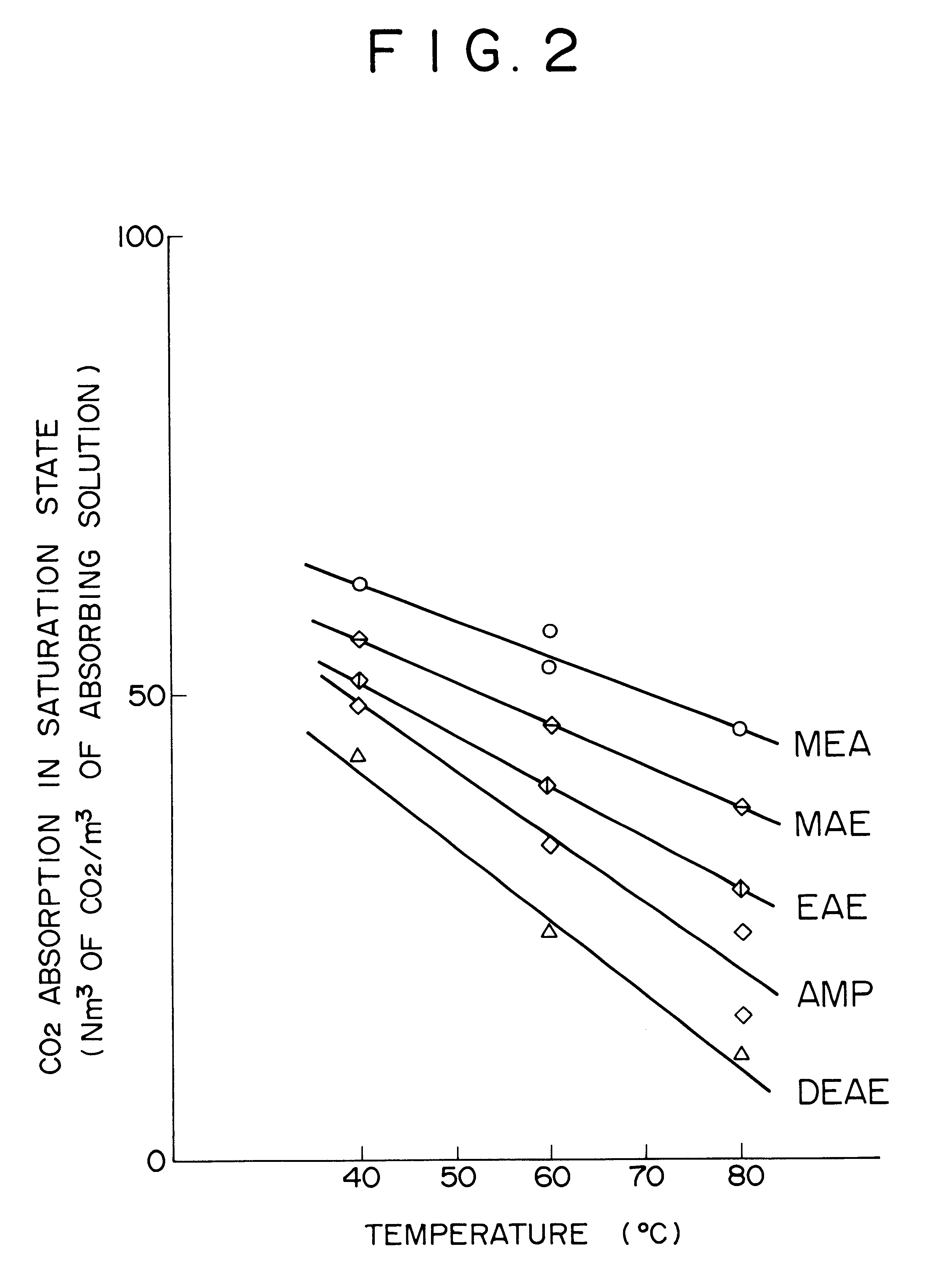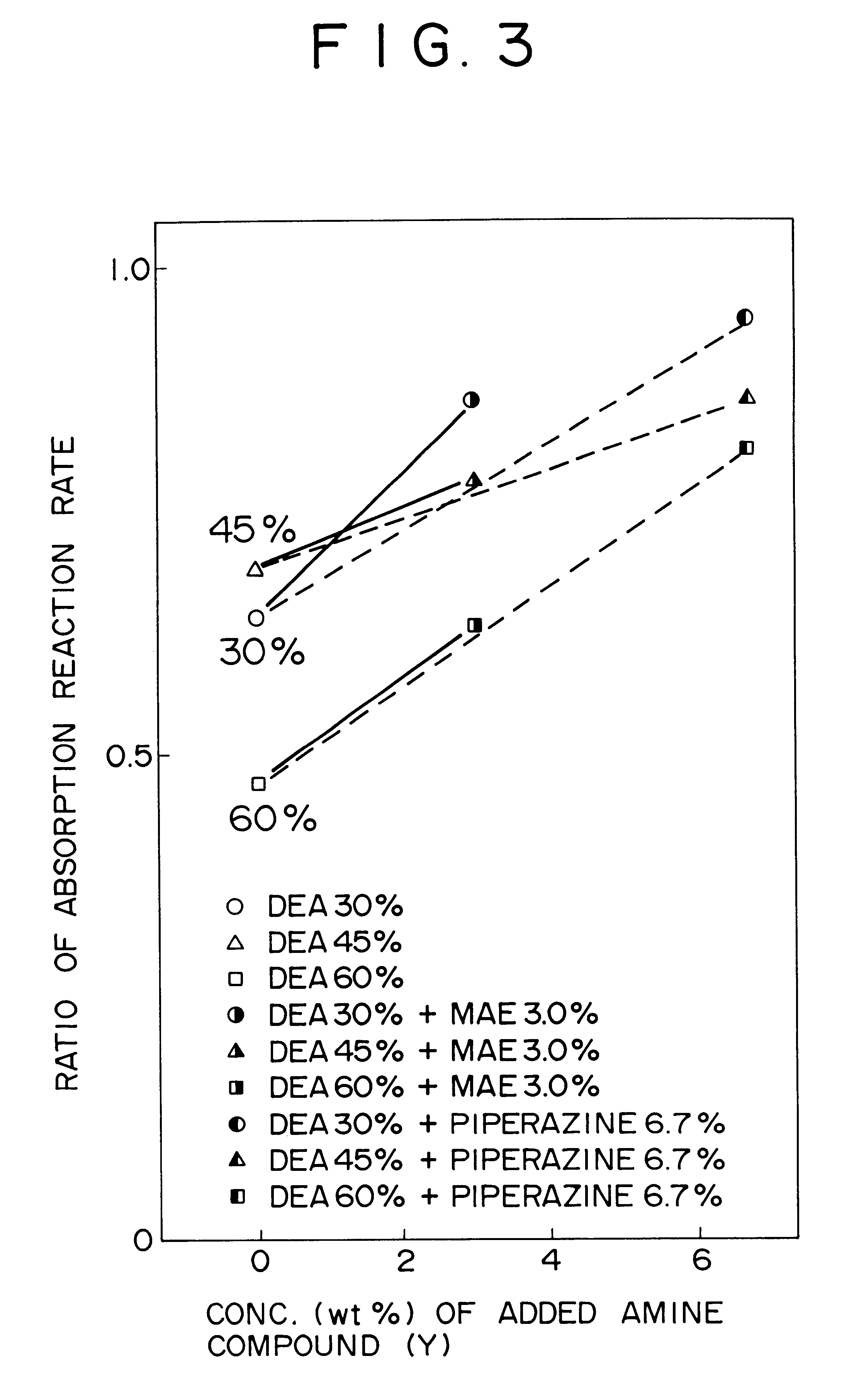Method for removing carbon dioxide from combustion exhaust gas
a technology of combustion exhaust gas and carbon dioxide, which is applied in the direction of hydrogen sulfides, sulfur compounds, separation processes, etc., can solve the problems of high absorption rate, and achieve the effect of improving the absorption rate of absorbents and high absorption ra
- Summary
- Abstract
- Description
- Claims
- Application Information
AI Technical Summary
Benefits of technology
Problems solved by technology
Method used
Image
Examples
examples 6 to 8
, COMPARATIVE EXAMPLES 2 to 4
50 ml of an absorbing solution, i.e., an aqueous solution prepared by mixing an amine compound (X) selected from 2-amino-2-methyl-1-propanol (AMP), diethanolamine (DEA) and monoethanolamine (MEA) with an amine compound (Y) selected from 2-(methylamino)-ethanol (MAE) and piperazine in each ratio shown in Table 2 was placed in a glass reaction vessel (flask) disposed in a thermostatic chamber, and a mixed gas (a test gas) was fed to the flask with stirring at 40.degree. C. at a flow rate of 1 liter / minute under atmospheric pressure. The test gas used herein was a model combustion exhaust gas (which corresponds to an LNG-fired exhaust gas) at 40.degree. C. having a composition of 10 mole % of CO.sub.2, 3 mole % of O.sub.2 and 87 mole % of N.sub.2.
The test gas was continuously allowed to stream, and when the CO.sub.2 concentration of the fed gas was equal to that of the discharged gas, CO.sub.2 contained in the absorbing solution was measured by the use of a...
PUM
 Login to View More
Login to View More Abstract
Description
Claims
Application Information
 Login to View More
Login to View More - R&D
- Intellectual Property
- Life Sciences
- Materials
- Tech Scout
- Unparalleled Data Quality
- Higher Quality Content
- 60% Fewer Hallucinations
Browse by: Latest US Patents, China's latest patents, Technical Efficacy Thesaurus, Application Domain, Technology Topic, Popular Technical Reports.
© 2025 PatSnap. All rights reserved.Legal|Privacy policy|Modern Slavery Act Transparency Statement|Sitemap|About US| Contact US: help@patsnap.com



